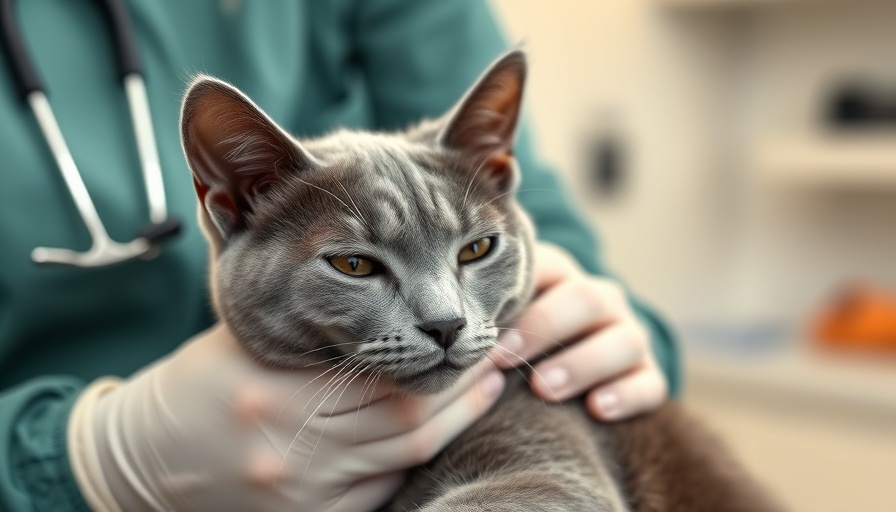
Understanding Cat Nasal Polyps: An Overview
Nasal polyps are non-cancerous growths that may surprise cat owners when they notice their feline friends sneezing or breathing noisily. These fleshy growths can plague a cat's ears, throat, and nose, often leading to worry about their health. What many may not realize is that while this condition can cause discomfort, it's not often a medical emergency. As a pet parent, knowing the ins and outs of cat nasal polyps can help you manage your pet's health and maintain their lively spirit.
What Are Cat Nasal Polyps?
Cat nasal polyps, scientifically known as nasopharyngeal polyps, arise from the inflammatory and skin cells in a cat's anatomy, particularly from the middle ear extending through the Eustachian tube. While they are typically small, a polyp can grow large enough to become visible, although most remain hidden from view. The symptoms may manifest through increased sneezing, nasal drainage, or the sound of noisy breathing as the polyp exerts pressure on surrounding structures.
Common Symptoms to Watch For
Paying attention to your cat's behavioral changes can offer crucial insight into the potential presence of nasal polyps. Common signs include:
- Nasal drainage and congestion: Look out for abnormal discharge from the nasal cavities.
- Difficulty breathing: This may present as a wheezing sound or a noticeable struggle while breathing.
- Sneezing or reverse sneezing: Frequent sneezing episodes can be an indicator of underlying issues.
Types of Cat Nasal Polyps: What You Need to Know
Nasal polyps can be categorized based on their origin:
- Nasopharyngeal polyps: These originate from the middle ear and extend through the Eustachian tube, potentially affecting the throat.
- Polyp of the nasal turbinate: This type originates within the mucous membranes of the nose, often leading to significant congestion.
The Emotional Connection: How Nasal Polyps Impact Feline Lives
As devoted cat owners, we deeply care for our pets’ wellbeing. A diagnosis of nasal polyps, while not life-threatening, can create a ripple effect on our cats' quality of life. The discomfort caused by inflammation could lead to behavioral changes, added stress, or frustration for both pets and owners. Compassionate understanding of their symptoms enhances our role as caregivers and encourages prompt veterinary consultation for relief and treatment.
Treatment Options for Cat Nasal Polyps
Although the exact cause of nasal polyps remains unknown, inflammation is often cited as a significant contributing factor. Treatment typically revolves around addressing the symptoms and ultimately removing the polyps. Your veterinarian may suggest:
- Surgical removal: This is often the most effective way to provide long-term relief.
- Medication: Anti-inflammatory drugs might be prescribed to reduce swelling.
By understanding treatment options, pet parents are empowered to make informed decisions for their furry family members.
Frequently Asked Questions About Cat Nasal Polyps
It’s natural to have questions about this condition. Here are some frequently asked inquiries:
- Are nasal polyps harmful? Nasal polyps are generally non-cancerous, but they can lead to discomfort and other health issues.
- Can polyps return after treatment? While surgical removal provides significant relief, there’s a possibility of recurrence based on individual health circumstances.
Why Understanding Cat Nasal Polyps Matters
Being proactive about your cat’s health enables early detection and treatment of nasal polyps. With proper awareness and veterinary guidance, cat owners can alleviate potential stressors for their feline companions. Paying attention to tiny changes in behavior and health can make a significant difference in your pet’s overall happiness and quality of life.
Conclusion: Taking Action for Your Feline Friend
If you notice signs that might indicate nasal polyps in your cat, don’t hesitate to consult your veterinarian. They’re equipped to guide you in your pet’s journey to wellness. Remember, the sooner you act, the sooner your furry friend can return to their sprightly self.
 Add Row
Add Row  Add
Add 


Write A Comment